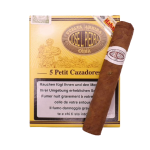The Fascinating History of Cigars: From Ancient Times to Modern Luxury
To uncover the origins of cigars, we need to travel back to the pre-Columbian era in the Americas, where indigenous tribes were key in cultivating and using tobacco.
Indigenous Beginnings
Cigar smoking roots go back to the indigenous tribes of the Caribbean and Mesoamerica. The Mayans and other native cultures of Central America were pioneers in growing and using tobacco. Evidence suggests that these tribes were rolling tobacco leaves into cigars as early as the 10th century. The word “sikar,” which means to smoke in the Mayan language, is believed to be the origin of the word “cigar.”
The Mayans didn’t just smoke cigars for enjoyment. They also used tobacco in their religious and medicinal practices. Ancient artworks show deities and shamans smoking tobacco, underscoring its importance in their society.
Columbus and the New World
The history of tobacco and cigars took a significant turn when Christopher Columbus arrived in the Americas in 1492. When Columbus and his crew landed in what is now the Bahamas, they met the Taíno people, who offered them dried tobacco leaves. The Taíno were seen smoking these leaves like cigars, sparking the Europeans’ interest.
Rodrigo de Jerez, one of Columbus’s crew members, is noted as one of the first Europeans to smoke tobacco. He brought the habit back to Spain, where it quickly became popular. However, Jerez was later imprisoned by the Spanish Inquisition because his smoking was viewed with suspicion and linked to the devil.
The Spanish Influence
Spain played a crucial role in spreading cigar smoking. Spanish colonists in the Caribbean and newly established colonies in Cuba, especially Havana, began growing tobacco on a larger scale. By the 17th century, Cuba had become a central hub for tobacco production, with Cuban cigars gaining fame for their quality.
Cuba’s unique climate and fertile soil were perfect for growing tobacco, leading to the creation of distinct tobacco varieties and cigar-making techniques. Hand-rolled by skilled artisans, Cuban cigars became renowned for their exceptional craftsmanship and flavor—a reputation that continues today.
Spread to Europe and Beyond
Cigar popularity spread from Spain to other parts of Europe. By the 18th and 19th centuries, cigar smoking had become fashionable among the European elite. The journey of the cigar continued as European settlers and traders introduced tobacco to various parts of the world, including Asia and Africa.
In the United States, cigar smoking gained traction during the 19th century, particularly after the Civil War. Cities like Tampa, Florida, and Key West became key centers for cigar production, often using Cuban tobacco and employing skilled Cuban immigrants.
Modern Day Legacy
Today, cigars are enjoyed globally, with countries like the Dominican Republic, Nicaragua, and Honduras also becoming prominent producers alongside Cuba. The art of cigar making remains deeply rooted in tradition, with many cigars still crafted by hand.
In summary, the first cigars were created by the indigenous peoples of the Caribbean and Mesoamerica. The practice was later adopted and spread by Europeans following Columbus’s voyages. This cultural exchange has left a lasting impact on history, with cigars evolving from their ancient origins to become a global symbol of craftsmanship and luxury. The legacy of the first cigars continues to be celebrated by enthusiasts who appreciate the rich history and meticulous artistry behind each hand-rolled cigar.

